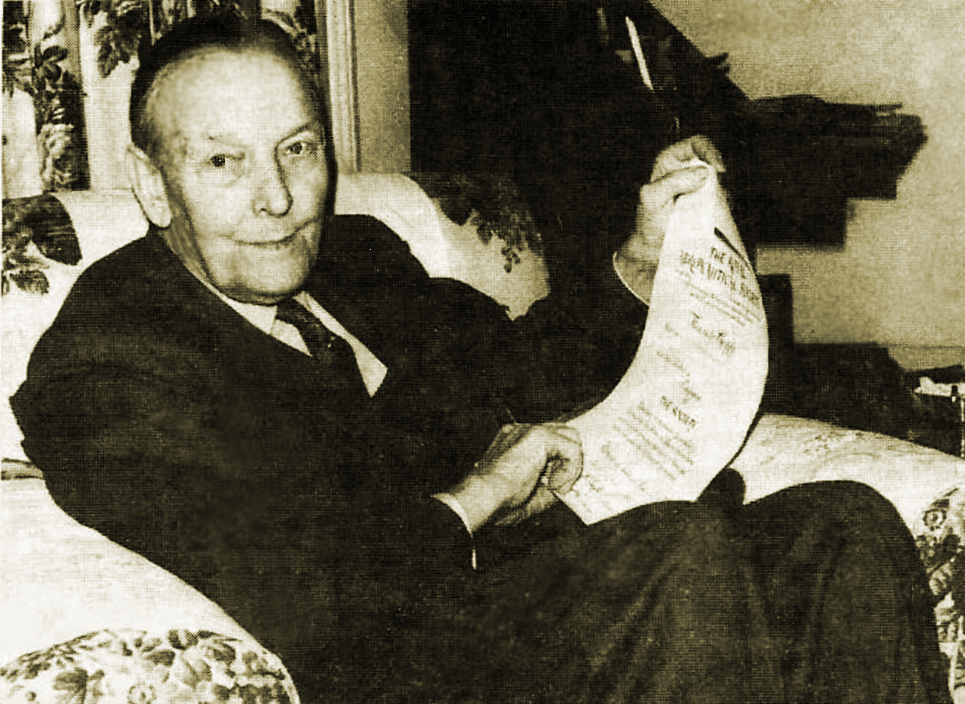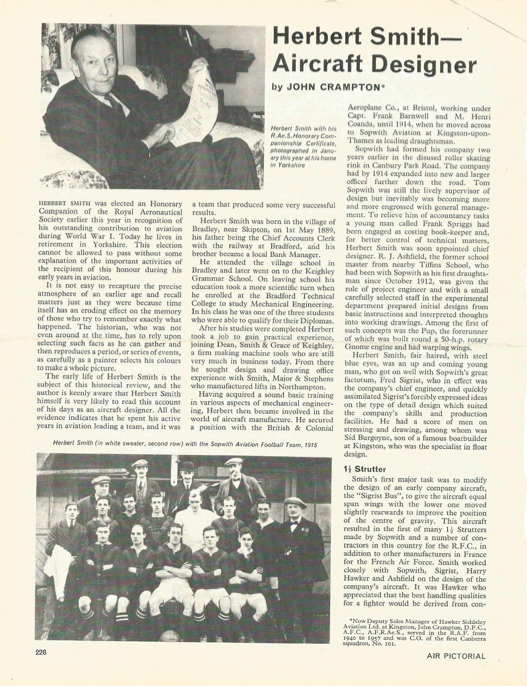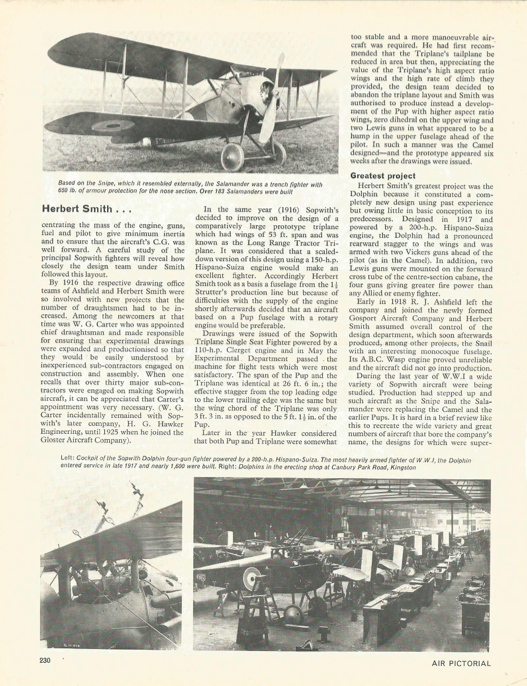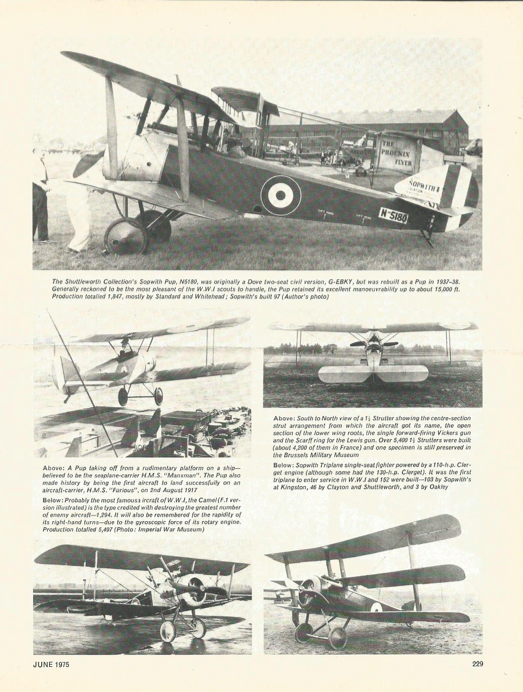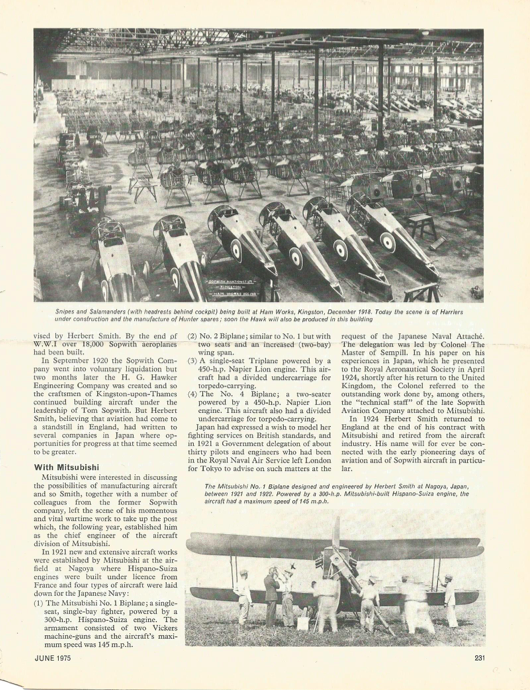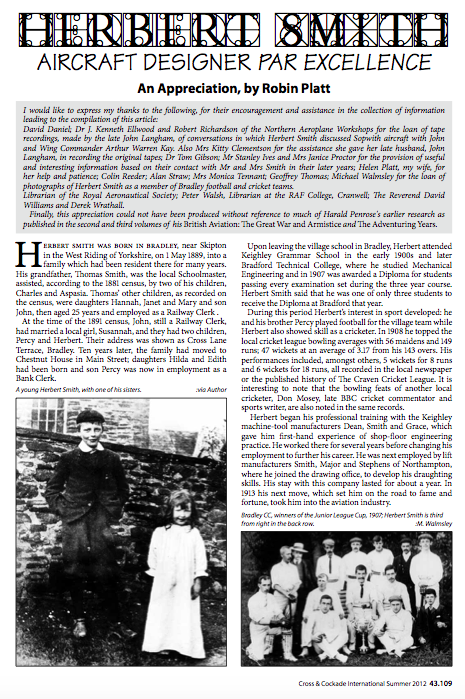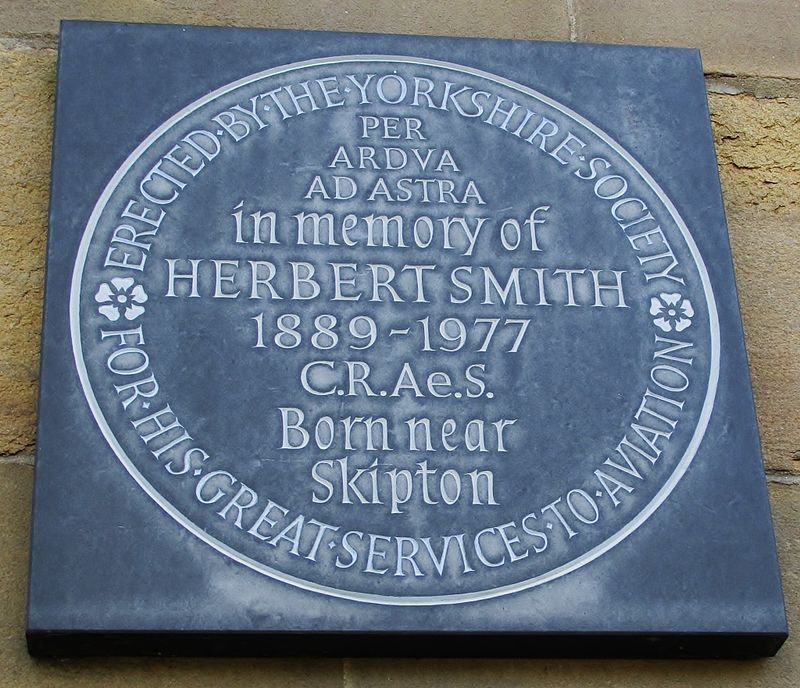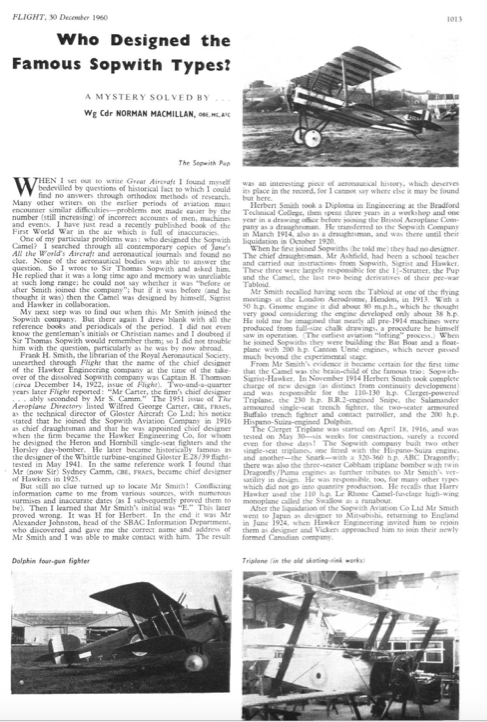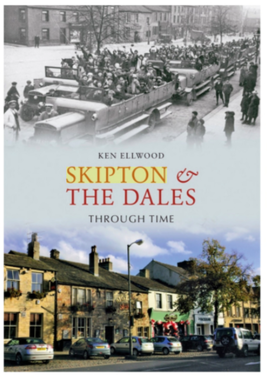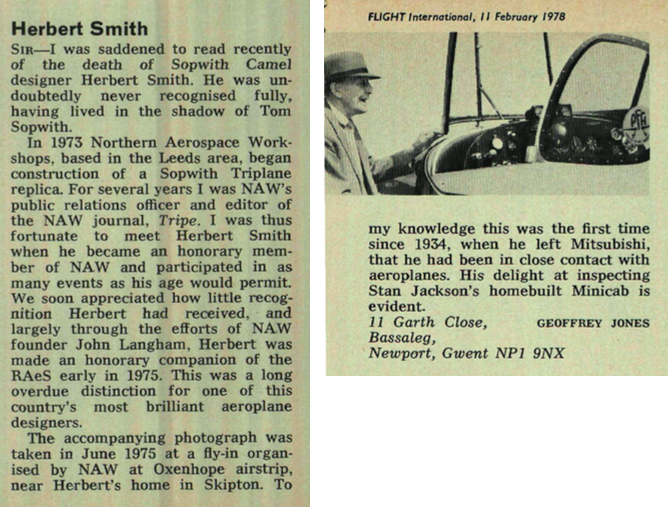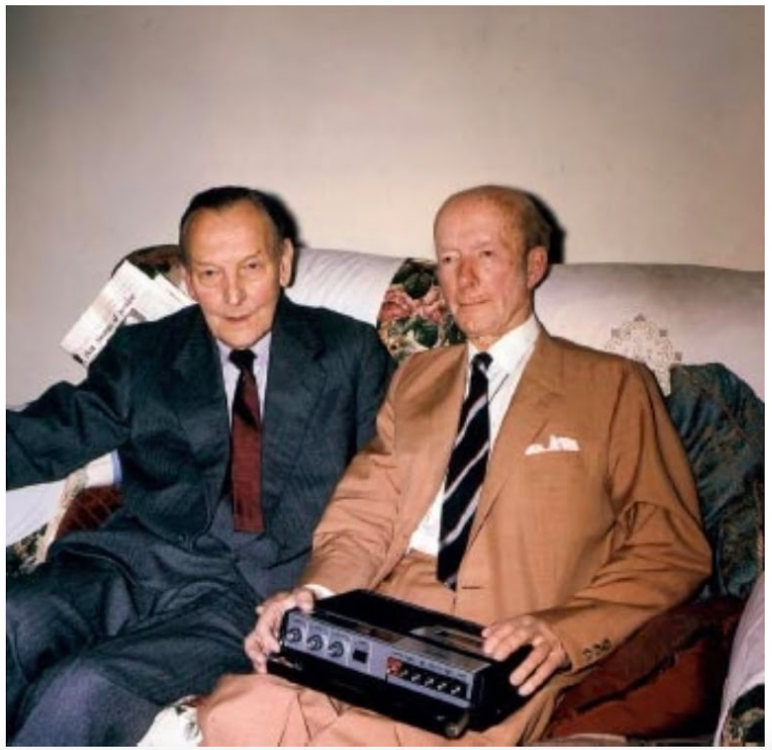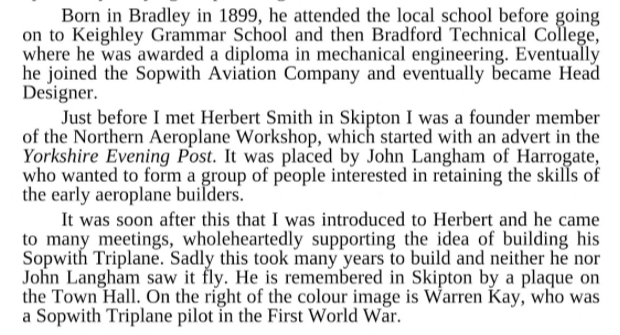Herbert Smith – Designer of the Sopwith Triplane
Picture below: Herbert Smith with his R. Ae.S. Honorary Companionship Certificate photographed in January 1975 at his home in Yorkshire.
|
Smith started his career with the Yorkshire engineering company of Dean, Smith & Grace. He joined the Sopwith Aviation Company as a draughtsman in March 1914 and became Sopwith's chief engineer later that year. Smith designed the Pup, Triplane, Camel, and Snipe.
In 1916, Herbert Smith became Chief Engineer of the Sopwith company, and under his design leadership its other successful World War I types included the larger Type 9901 and the Pup. Experimentally equipped with three narrow-chord wings and a more powerful engine, the Pup led to the Triplane, which was used by just four squadrons of the RNAS during 1917, but became well known for its startling fighting qualities, put to best use by Raymond Collishaw's famous 'Black Flight' of 'Naval 10' (No. 10 Squadron RNAS). This flight was so called due to the black identification colour of the flight's aircraft, which in turn led to their naming as Black Maria, Black Prince, Black Death, Black Roger and Black Sheep. |
Such was the impact of this type that it spawned a large number of experimental triplane designs from manufacturers on all sides, although only the Fokker Triplane achieved any subsequent success.
In the early summer of 1917 the twin-gun Camel fighter was introduced and this replaced the Triplane. Smith worked for the Sopwith firm until it dissolved in October 1920. In February 1921, the Mitsubishi Internal Combustion Engine Manufacturing Company in Nagoya invited Smith, along with several other former Sopwith engineers, to assist Mitsubishi in creating an aircraft manufacturing division. Smith and his team moved to Japan, where they designed the B1M, 1MF, and 2MR. Smith returned to England in 1924 and retired from the aviation industry. |
"Herbert Smith--Aircraft Designer." Air Pictorial: Journal of the Air League of the British Empire, Volume 37, 1975.
Herbert Smith Article - Air PictorialThe article you can see above is available below by clicking the download file option. It is from the magazine Air Pictorial, June 1975.
|
Picture: Town Hall, Skipton, Yorkshire, England.
| ||||||||||||||
Herbert Smith 1960 'Flight' magazine1960 'Flight' magazine by Wg Cdr Norman Macmillan OBE, MC, AFC, who uncovered the story of Herbert Smith by actually interviewing him.
|
Herbert Smith Flight International 1978Letter from Norther Aeroplane Workshop who met Herbert Smith. You can drag and drop this picture for higher resolution - Not much higher though.
Herbert Smith pictured with Warren KayHerbert on the left and Warren on the right. Warren Kay was a WW1 Sopwith Triplane pilot. From the book, Skipton & the Dales Through Time.
| ||||||||
|
Plaques of honour
Sir - Skipton has erected plaques to commemorate famous sons who have done well for this country both in war and peace. The society placed another plaque to remember the life of Herbert Smith on Skipton Town Hall. Herbert Smith was born in Bradley, educated locally and became chief designer for the Sopwith Aircraft Company at Kingston on Thames. He designed all of Sopwith's fighting aircraft during the First World War, including the Triplane and the Camel. |
Thousands of Sopwith Camels were built and they eventually had control of air over the trenches of the Western Front. They must have saved thousands of lives. They were the equivalent of the Hurricane and Spitfire during the Battle of Britain in the Second World War. Mr Smith retired to live in Skipton and I visited him many times. When Northern Aeroplane Workshops started building a Sopwith Camel, Herbert was able to help with advice but never saw it fly at Old Warden, home of the Shuttleworth Collection and well worth a visit. Ken Ellwood, Tarn Moor Crescent, Skipton |

